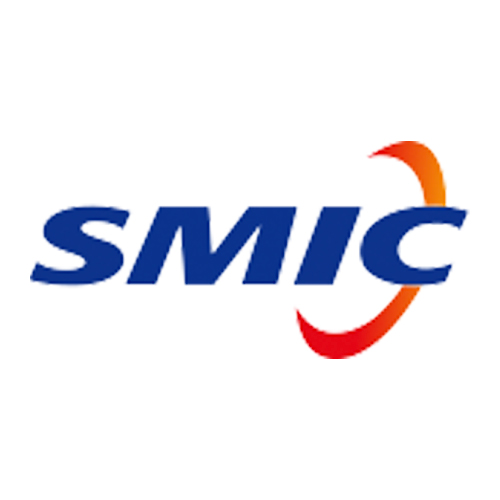中芯国际(688981.SH,00981.HK)2025年第一季度业绩说明会
文章语言:
简
繁
EN
Share
Minutes
原文
会议摘要
SMIC reported Q1 revenue of $2.002 billion, a 1.8% increase, with a gross margin of 22.5%. Wafer revenue grew due to geopolitical changes and domestic trading programs, but the ASP decrease impacted revenue. The company expects Q2 revenue to decrease by 4% to 6% and gross margin to range between 18% and 20%. SMIC is in a critical expansion period, with ongoing capital expenditures leading to negative free cash flow, and plans not to distribute profits for the year.
会议速览
The webcast conference call discusses Semiconductor Manufacturing International Corporation's first quarter 2025 financial results, featuring presentations on the company's performance and a Q&A session.
The company reported Q1 2025 revenue of 2002.47 million, a 1.8% increase sequentially, with a gross margin of 22.5%. Profit from operations stood at 310 million, and EBITDA was 1290.22 million. Total assets were 40.58 billion, including 12.7 billion in cash, while total liabilities were 15.7 billion. Guidance for Q2 2025 anticipates a revenue decrease and a gross margin between 18% and 20%.
Despite annual profits and positive accumulated undistributed profits, the company opts not to distribute cash dividends. This decision is driven by ongoing capacity construction, increasing market share, and the need for substantial capital expenditures in research and development. The plan, aligning with regulatory guidelines and company policy, aims to enhance competitiveness and protect shareholder interests in the long term. The Board of Directors has approved the plan, which will be presented for shareholder approval at the Annual General Meeting.
During the first quarter of 2020, the company reported a revenue of 2240.57 million, marking a 1.8% sequential increase. Wafer revenue constituted 95.2% of total revenue, with notable growth attributed to geopolitical shifts, domestic trading programs, consumption subsidies, and industrial and automotive sector restocking. Revenue from China remained stable, while overseas revenue saw a sequential increase due to specific market factors. Automotive and industrial sectors contributed significantly to revenue, growing by over 20% sequentially, driven by the company's strategic investments and partnerships in automotive electronics platforms.
Despite a moderate market recovery, the company saw strong demand for BCD, MCU, and specialty memory, leading to increased revenue. Gross margin remained stable, aided by cost reduction and efficiency improvements. However, the second quarter is projected to see a revenue decrease of 4-6% with a lower gross margin due to rising depreciation costs. Positive signals from industrial and automotive sectors indicate a potential upturn, but uncertainties around tariff policies and future demand remain, particularly for the second half of the year.
During the May 9, 2025 conference call, the company expressed gratitude to customers, suppliers, investors, and the community for their support. The Q&A session featured questions in both Chinese and English, addressed by Dr. Zhao and Doctor Wu, focusing on various aspects of the business and operations.
要点回答
Q:What are the financial results for the first quarter of 2025 reported by the company?
A:The company reported a revenue of $2,002.47 million, a gross margin of 22.5%, an operating profit of $310 million, an EBITDA of $1,290.22 million with an EBITDA margin of 57.5%, and a profit attributable to the company of $188 million.
Q:What is the company's financial status as of the end of the first quarter?
A:The company's total assets were $40.58 billion, with total cash on hand at $12.7 billion, total liabilities at $15.7 billion (of which total debt was $11.3 billion), and total equity at $32.2 billion. The step to equity ratio was 34.9%, and the net debt to equity ratio was negative 4.5%.
Q:What is the company's guidance for the second quarter of 2025?
A:The company's guidance for the second quarter of 2025 is a decrease in revenue by script to script sequentially and a gross margin expected to be in the range of 18% to 20%.
Q:Why does the company plan not to distribute profits for the year 2025?
A:The company plans not to distribute profits for the year 2025 because it is in an important period of capacity construction and continuous R&D activities which still require continuous capital expenditures. This arrangement helps to enhance the company's core competitiveness and ensures its leading position in the market. It aligns with the company's long-term development needs, the long-term interest of shareholders, and is in accordance with relevant laws and regulations.
Q:What are the key drivers for the revenue growth in the company's automotive business segment?
A:The key drivers for the revenue growth in the company's automotive business segment include the company's increased investment, major customer achievements in the automotive field, and close collaboration with industrial chains in areas such as BCD, CIS, MCU, and domain controllers.
Q:How is the company addressing the market's moderate recovery and customer needs?
A:The company is actively promoting process iterations and product upgrades in response to customer needs and market moderate recovery. There was a strong demand from BCD, MCU, and specialty memory, leading to an increase in overall revenue from these platforms.
Q:What are the details regarding the company's gross margin and capacity utilization?
A:In the first quarter, the company's gross margin was 20 two-two point 5%, remaining flat sequentially, with a capacity utilization rate increasing by 4.1 percentage points to 80 in-n-out point 6%. The utilization rate of Ed inch was stable, and the utilization rate of Ed inch increased to the average level of script inch.
Q:What is the expected revenue change in the second quarter and what factors could affect it?
A:The expected revenue for the second quarter is to decrease 4% to 6% sequentially, with shipment units expected to be relatively stable and blended ASP to decrease. The gross margin in the second quarter is expected to be in the range of script to script 1 percentage point below the original guidance of the first quarter.
Q:What are the potential impacts of new tariffs on the company's future demand and capacity utilization?
A:The potential impacts include whether the new tariffs will lead to a decline in demand for commodity products and how the industry's localization transformation and supply chain strengthening affect manufacturing demand. The company is closely watching these factors to understand their impact on capacity utilization and future demand.

SMIC
Follow





